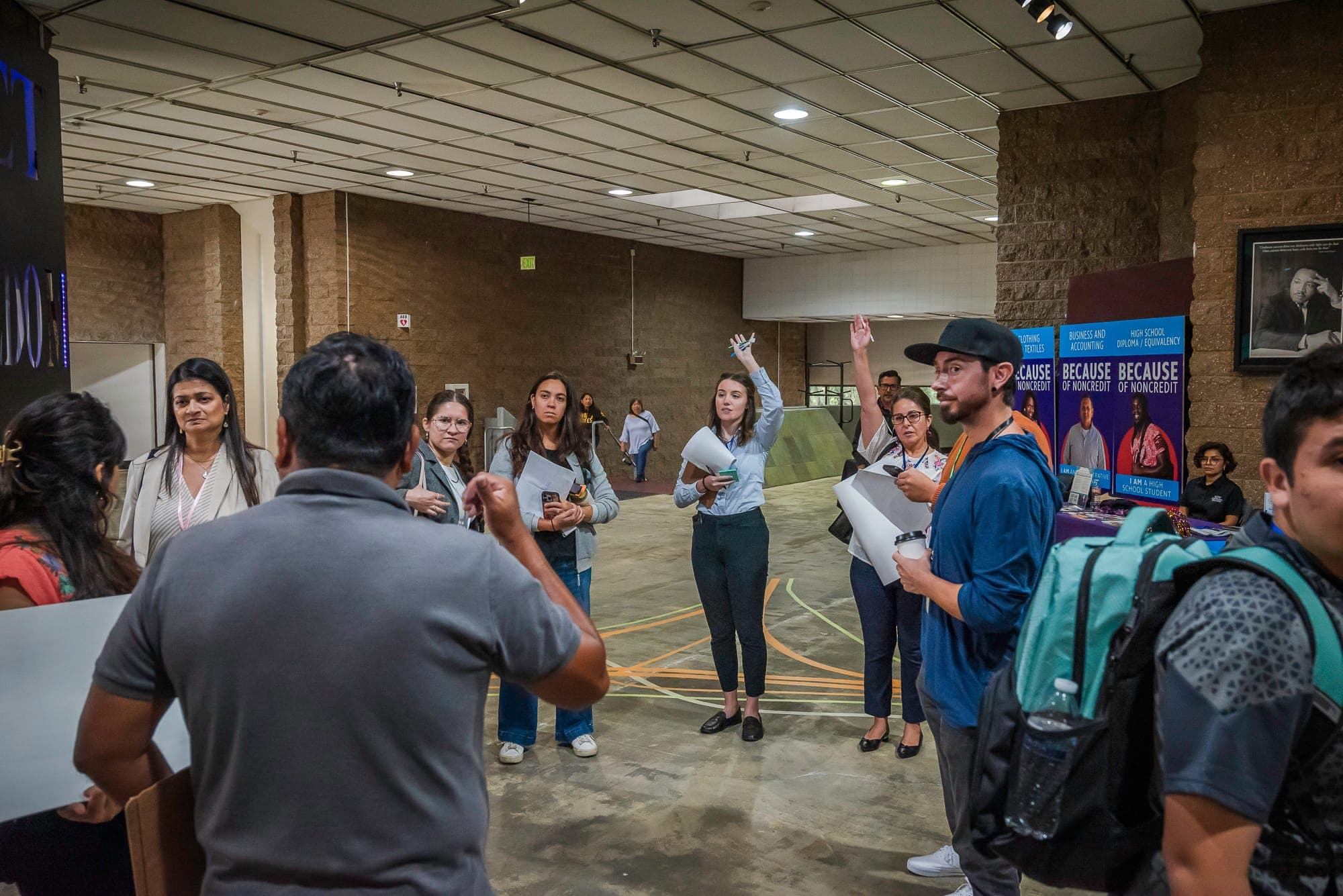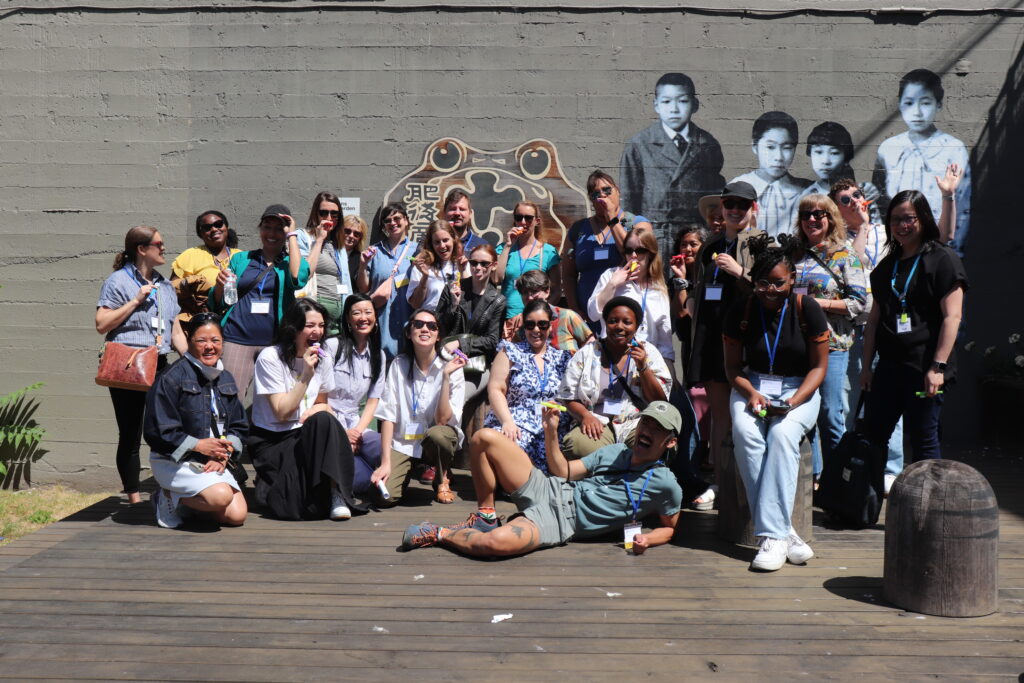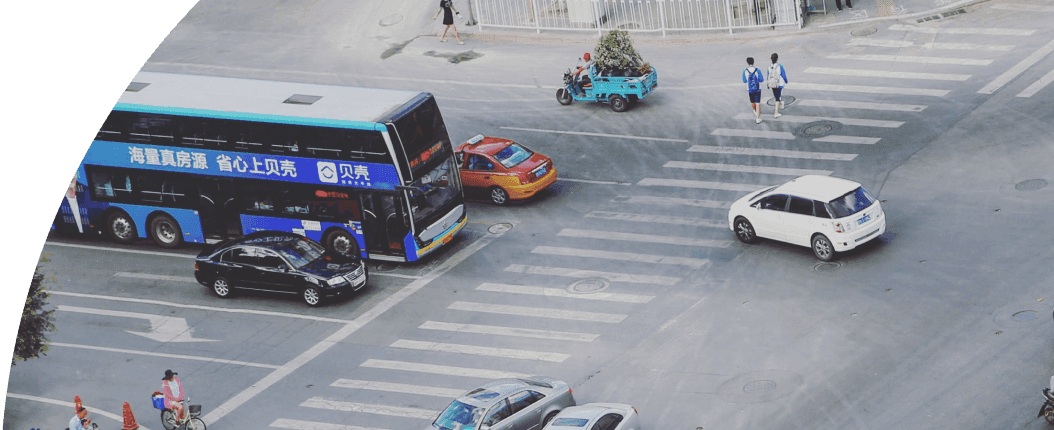
News
By Marian Liou, June 25, 2025
Earlier this month, Smart Growth America convened its Culture and Community Network in Seattle, bringing together teams from metropolitan planning organizations across the country. These teams are part of a seven-month, cohort-based learning program, funded through the generous commitment of the Kresge Foundation. This program supports regional governments exploring arts, culture, and creativity for deeper engagement and improved community outcomes.
The Seattle gathering, held in conjunction with the National Association of Regional Councils’ Annual Conference, was a key milestone in the cohort’s journey. Over two days of immersive learning and exchange, participants built relationships, explored creativity and culture as a means of connection, and examined what is possible when planning processes are designed with intention and imagination.
Grounding in community resilience
The convening opened with a site visit to Seattle’s Chinatown–International District, where arts and culture have long served as tools of resistance, resilience, and organizing. Through community-led storytelling, public art, and cultural preservation, residents have influenced development, pushed back against displacement, and built long-term vision and power.
This visit—led by artist and activist Scott Oshima and featuring An Huynh and Naomi Saito from the Seattle Chinatown International District Preservation and Development Authority (SCIDpda), Vivian Chan and Wren Wheeler from the Wing Luke Museum, and Tiernan Martin from the City of Seattle—highlighted how government agencies show up not just as decision-makers, but as collaborators. In response to community frustration over past top-down planning efforts—particularly around Sound Transit’s proposed light rail expansion—the city has taken steps toward a more collaborative, trust-building approach. This shift includes elevating community-rooted leadership within city government, such as a former SCIDpda board member now working in a city role, and prioritizing long-standing community visions over new planning processes.
Embodiment, risk, and reflection
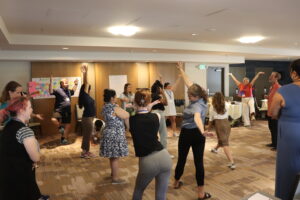 In one session, participants were introduced to embodied techniques—creative, movement-based practices that use the body as a tool for reflection and expression. Marc Weinblatt of the Mandala Center for Change introduced methods including applied sociometry, image theatre (sculptor/clay exercises), and forum theatre, which help participants visualize power dynamics, practice empathy, and explore multiple perspectives in real time. These techniques aimed to illuminate how to bring a more human-centered approach to planning and engagement work, allowing participants to process complex challenges not just intellectually, but physically and emotionally—building trust, insight, and connection in ways traditional processes often overlook.
In one session, participants were introduced to embodied techniques—creative, movement-based practices that use the body as a tool for reflection and expression. Marc Weinblatt of the Mandala Center for Change introduced methods including applied sociometry, image theatre (sculptor/clay exercises), and forum theatre, which help participants visualize power dynamics, practice empathy, and explore multiple perspectives in real time. These techniques aimed to illuminate how to bring a more human-centered approach to planning and engagement work, allowing participants to process complex challenges not just intellectually, but physically and emotionally—building trust, insight, and connection in ways traditional processes often overlook.
Cultivating leadership commitment
In small teams, participants began designing experiments and proposals—scalable actions and ideas to test back home in their agencies. These ranged from developing external partnerships to communications strategies, all grounded in creativity and cultural responsiveness. Teams received direct feedback from Lizzi Weyant and Samyukth Shenbaga, leaders at Boston’s Metropolitan Area Planning Council and the Atlanta Regional Commission, respectively, both of which have been advancing innovative, equity-driven arts and culture strategies in their regions for around a decade.
Building leadership and capacity for risk
The second day began with a session, led by Roshani Thakore of the Atlanta Regional Commission, focused on developing internal relationships and champions through transparency, trust, and a shared vision. Participants identified professional risks that each has taken, from incremental changes to bold actions, an exercise that spurred self-reflection around individual and institutional capacity for experimentation and change. They also engaged in a group exercise of “making the impossible possible,” challenging standard processes while reinforcing the mindset that innovation and problem-solving often begin with seemingly impossible ideas and is built through iteration.
Creativity beyond the visual
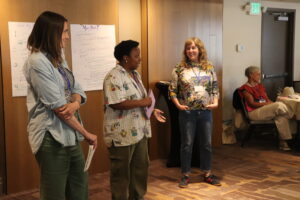 The convening’s closing session was led by Gülgün Kayim, Director of Arts & Culture for the City of Seattle, a theater artist, and a long-time leader in integrating artists into public sector work. Kayim challenged the group to move beyond viewing art as “decoration or entertainment,” and to instead embrace it as a means of shifting institutional culture—through deep listening, trust-building, and care-centered engagement.
The convening’s closing session was led by Gülgün Kayim, Director of Arts & Culture for the City of Seattle, a theater artist, and a long-time leader in integrating artists into public sector work. Kayim challenged the group to move beyond viewing art as “decoration or entertainment,” and to instead embrace it as a means of shifting institutional culture—through deep listening, trust-building, and care-centered engagement.
She emphasized that creative strategies are not superficial add-ons to planning—they are essential tools for cultivating belonging, shifting power, and developing new avenues for repairing relationships between government and communities. Her message was clear: “If you’re going to do the work, do it properly—or not at all.”
Moving forward: Transforming planning through creativity
Across the country, regional planning agencies are beginning to explore new ways of working. Visual storytelling, participatory installations, artist residencies, and culturally relevant engagement strategies are making complex planning concepts more accessible and inviting new voices to the table.
Yet, without deeper structural change, such efforts risk remaining surface-level or symbolic. Integrating arts and culture into planning is not about isolated projects—it is about shifting practices, power, and priorities. It requires rethinking how success is defined: from outputs to relationships, from transactions to trust, from efficiency to empathy.
This convening was not just about new tools or strategies; it was about building the courage to imagine differently, the relationships that sustain transformation, and the care needed to make planning more human and just. As the Culture and Community Network continues, these seeds of creativity, trust, and shared purpose will flourish into more responsive and imaginative planning and engagement practices nationwide.
Related News

© 2025 Smart Growth America. All rights reserved
Site By3Lane Marketing
